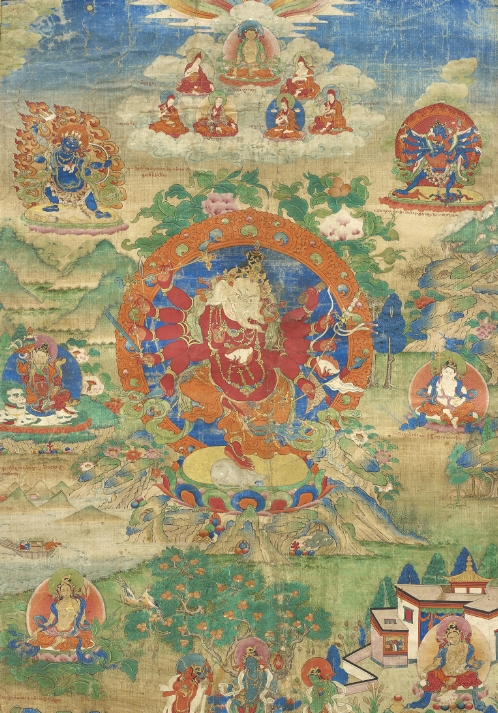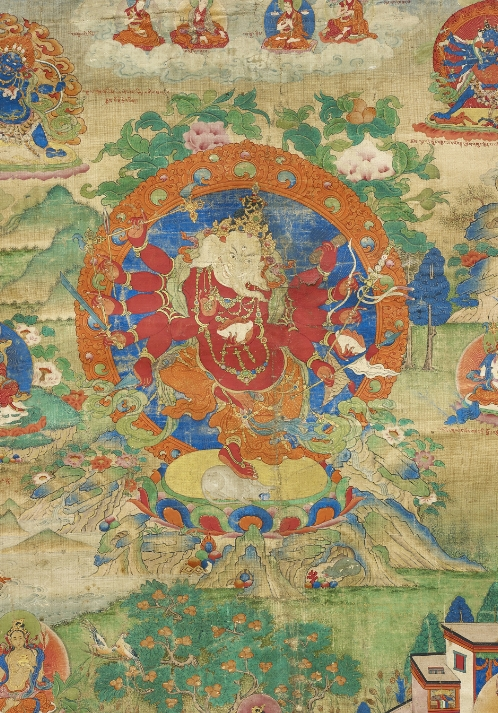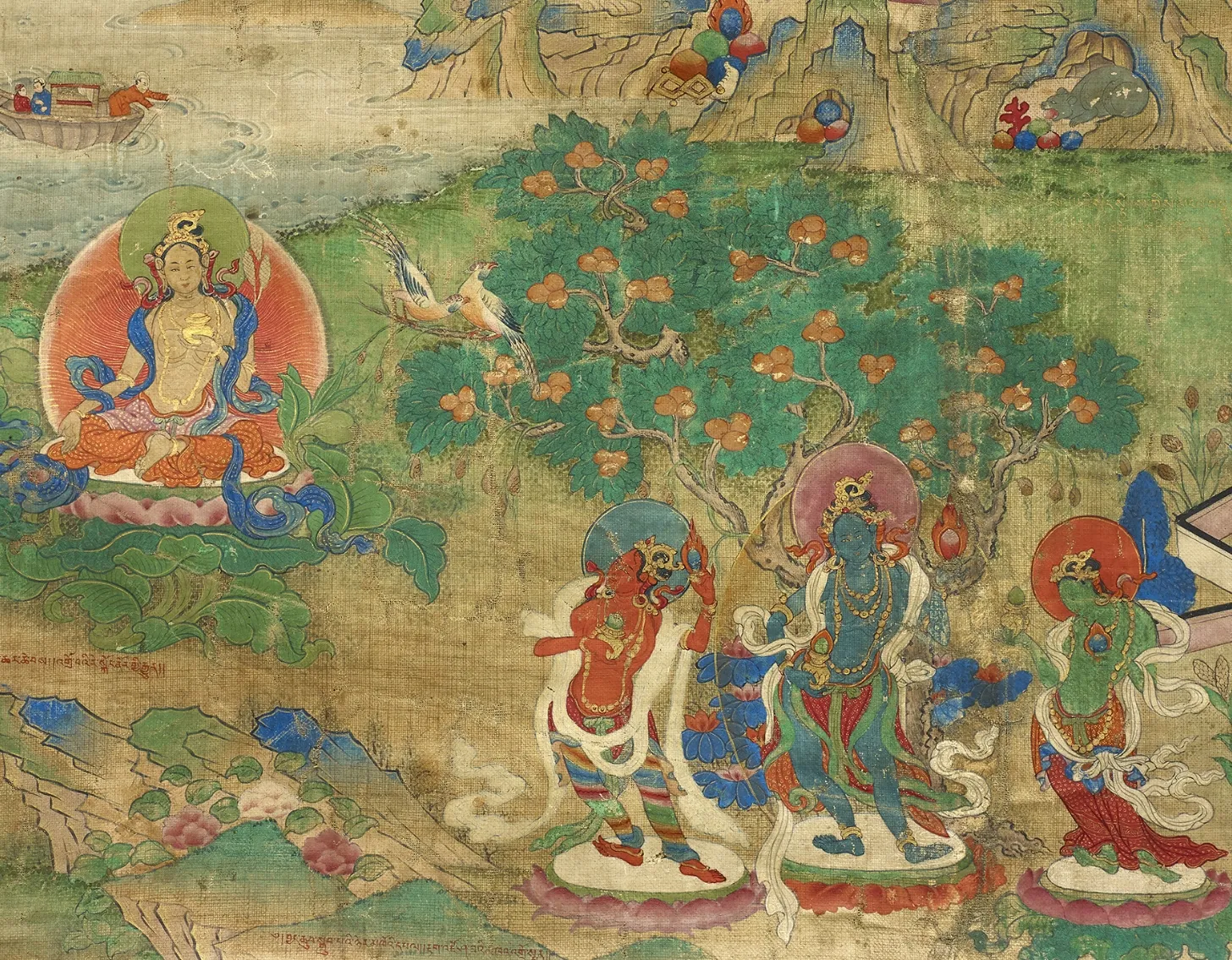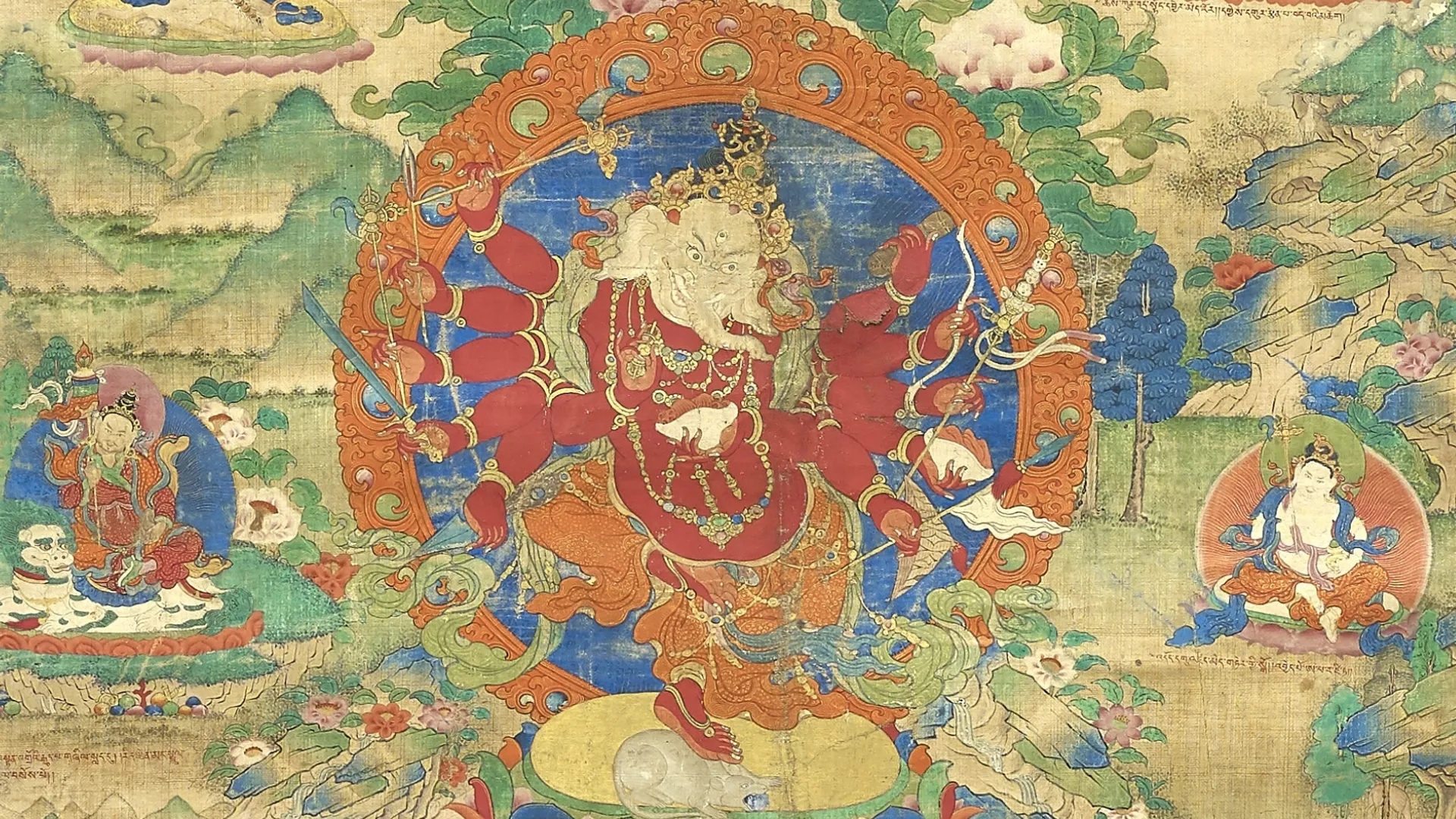With silks: 135 x 73 cm
Ganesha manifests as the Great Red Lord of Hosts (Maharakta Ganapati) in a very fine c. late 18th or early 19th century painting (cat. no. 21). The twelve-armed god dances with one foot firmly placed on the back of his faithful vehicle, the rat. The rat holds blue gems in his mouth, resembling his mammalian cousin the mongoose, a wealth deity who is typically shown in Tibetan art spitting gold coins or colored gems. Ganapati’s myriad functions as a Buddhist deity include the creation and accumulation of wealth. Sufficient material wealth allows the practitioner to focus on matters beyond the mundane. And the notion of wealth in a Buddhist context includes the highly valuable spiritual attributes accrued through inner practice.
The composition envisions Ganapati at the center of a beautiful, verdant landscape. The richly bejeweled ruby-red Ganapati dances within an orange flaming halo, on top of a rocky outcrop. In the foreground are trees, laden with ripe fruit, and exotic birds. The three beautiful Pishaci sisters pose in front of the trees, their white silk scarves fluttering in the wind. Each carries a flaming jewel and a wealth pot. To their left is the walled residence of Jambhala, Lord of Wealth, who holds a mongoose spitting gems.


To the sisters’ right is another wealth deity, the goddess Vasudhara holding a golden vase, and a grain stalk at her shoulder. Moving clockwise, are seen the wealth deity Vaishravana, Bhutadamara Vajrapani, and powerful Sakya hierarchs including Kunga Sangpo (1382-1456), Sakya Pandita (1182-1251), and Phakpa Rinpoche (1235-80). Also present are Chakrasamvara and Aparajita. In the middle ground, just to the right of Ganapati is a lake from which emerge mountain peaks and upon which three figures are making a journey in a small boat. Green mountains and blue or green trees dominate the landscape. Above, deities and revered hierarchs take their place in an azurite sky. The fine line, rich palate, and pleasing composition make this a particularly appealing work of the late 18th or early 19th century.

